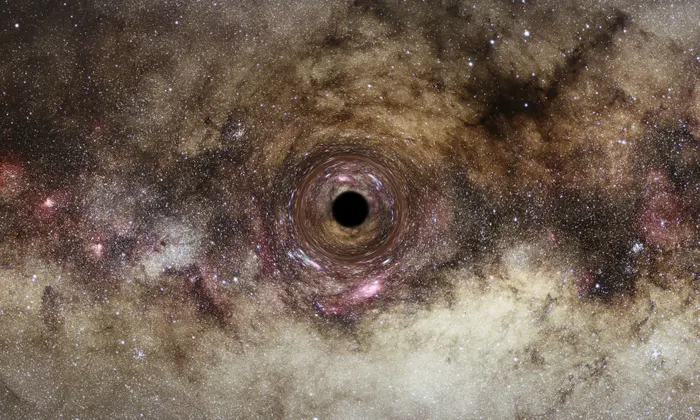Astronomers in the UK have identified an ultra-massive black hole with a weight of approximately 30 billion times that of the Sun.
“Extremely exciting” findings have been reported by a team from Durham University in the journal Monthly Notices of the Royal Astronomical Society, who have discovered one of the largest black holes ever detected. The scientists noted that the black hole is gargantuan in size.
“This particular black hole, which is roughly 30bn times the mass of our Sun, is one of the biggest ever detected and on the upper limit of how large we believe black holes can theoretically become, so it is an extremely exciting discovery.”
The study’s lead author, Dr. James Nightingale from the university’s Physics department, said
Astronomers have theorized that ultra-massive black holes, which weigh between 10 billion and 40 billion times more than the Sun, are the largest entities in the cosmos. They are presumed to exist at the center of major galaxies, such as our own Milky Way.
The origins of ultra-massive black holes are uncertain, and they are considered to be uncommon and difficult to detect. There are suggestions that these black holes were created when enormous galaxies merged billions of years ago during the early stages of the universe.
By utilizing gravitational lensing, a phenomenon in which a neighboring galaxy acts as a massive magnifying glass, researchers were able to detect the presence of a black hole. The black hole is a region of space where gravity’s influence is so strong that even light cannot escape from it.
To confirm the size of the black hole, the scientists utilized images taken by the Hubble space telescope and conducted supercomputer simulations at the university.
“Most of the biggest black holes that we know about are in an active state, where matter pulled in close to the black hole heats up and releases energy in the form of light, X-rays and other radiation,”
“However, gravitational lensing makes it possible to study inactive black holes, something not currently possible in distant galaxies. This approach could let us detect many more black holes beyond our local universe and reveal how these exotic objects evolved further back in cosmic time.”
Dr Nightingale said
The researchers stated that their study has provided a promising prospect for the discovery of more ultra-massive black holes than previously believed.
Funding for the research was provided by the UK Space Agency, the Royal Society, the Science and Technology Facilities Council, which is part of UK Research and Innovation, as well as the European Research Council.






